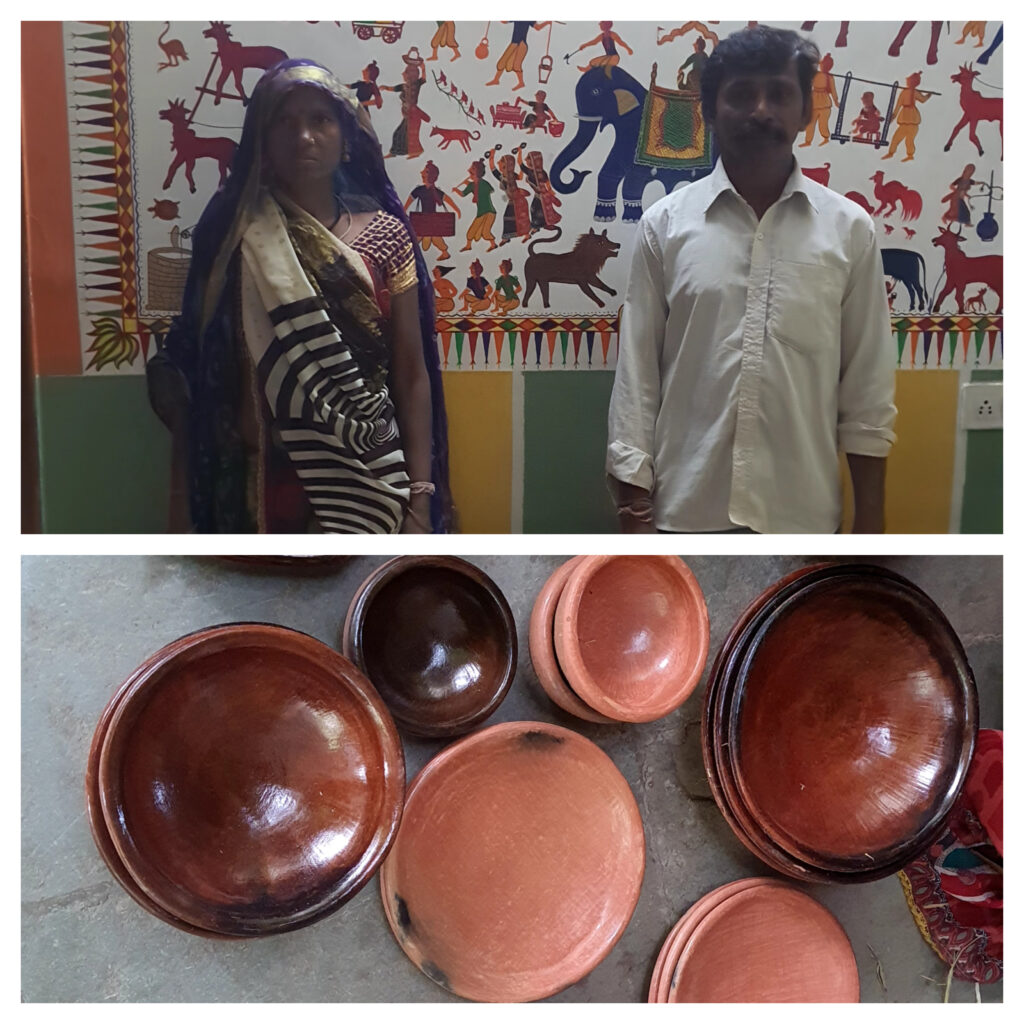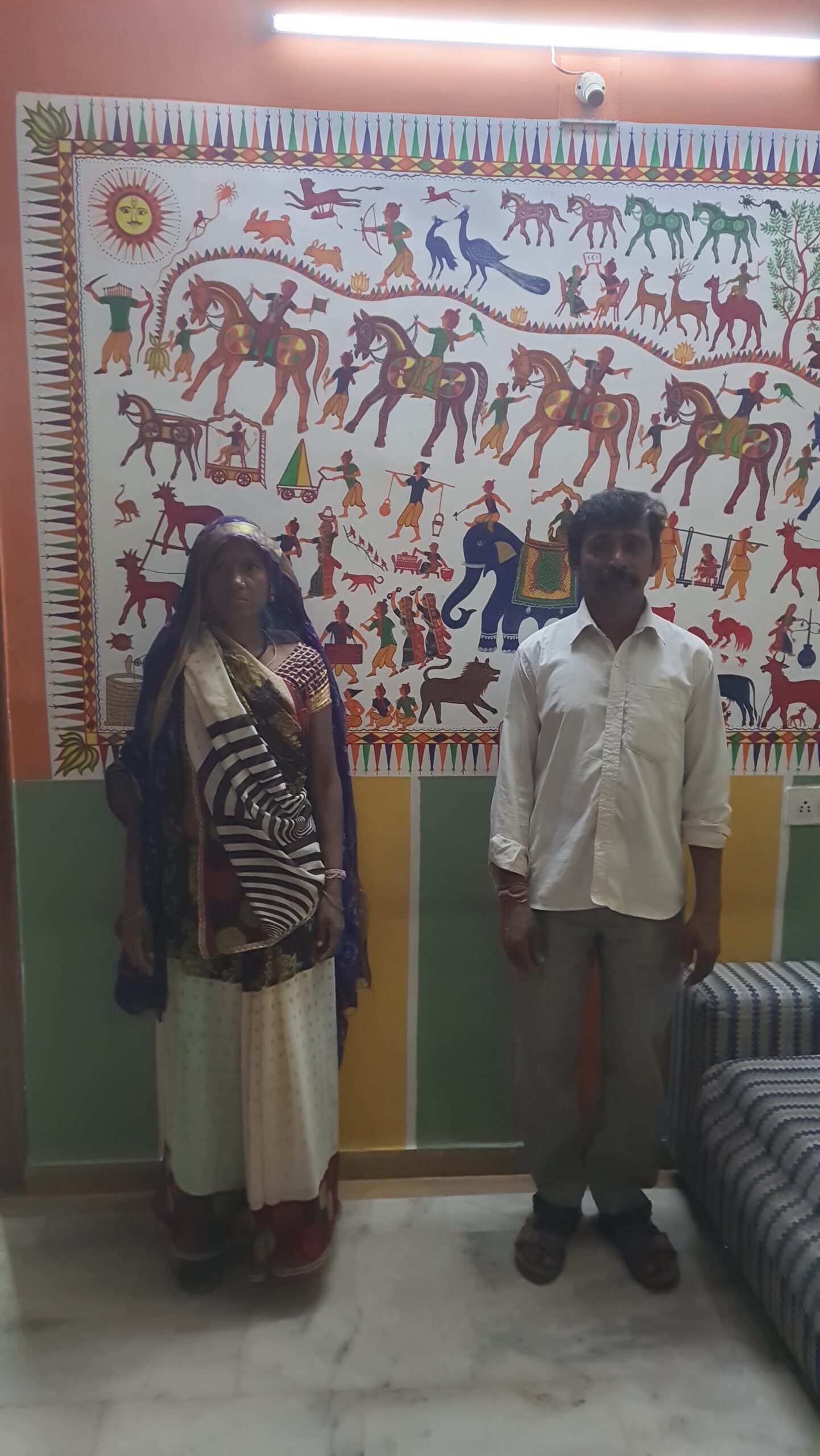
Problem Addressed
Usually, non-stick cookware is coated with harmful substances that leach into food. They have to be replaced as the coating wears off over time.
Technology
The non-stick substance used in Hariyali Handi comes from lalic insects that inhabit Pohim
trees. It is made by boiling raw lac twice, brewing a homogenous solution. When applied to hot earthenware, it seeps into the porous clay and hardens into a uniform coating.
Societal Impact
The communities of Dhanuka, Nayak and Bhil belonging to Gujarat, Maharashtra and Madhya Pradesh benefit a lot from this ancient practice. The natural lac coating is non-toxic, scrape free, and requires less oil. It has found tremendous contemporary demand among those consumers who don’t want to use chemical coated non-stick vessels. Design training arranged by GIAN has brought improvement in the design, look and feel of the vessels.
Current status
About 100 traditional potters create Hariyali Handi ware, selling roughly 2,000 units annually within India.
Their products are marketed by various NGOs and other institutional channels. Their clay non-stick pans are often sold on the first day itself every year at the Sattvik Traditional food and nutrition festival by HBN
and SRISTI.


